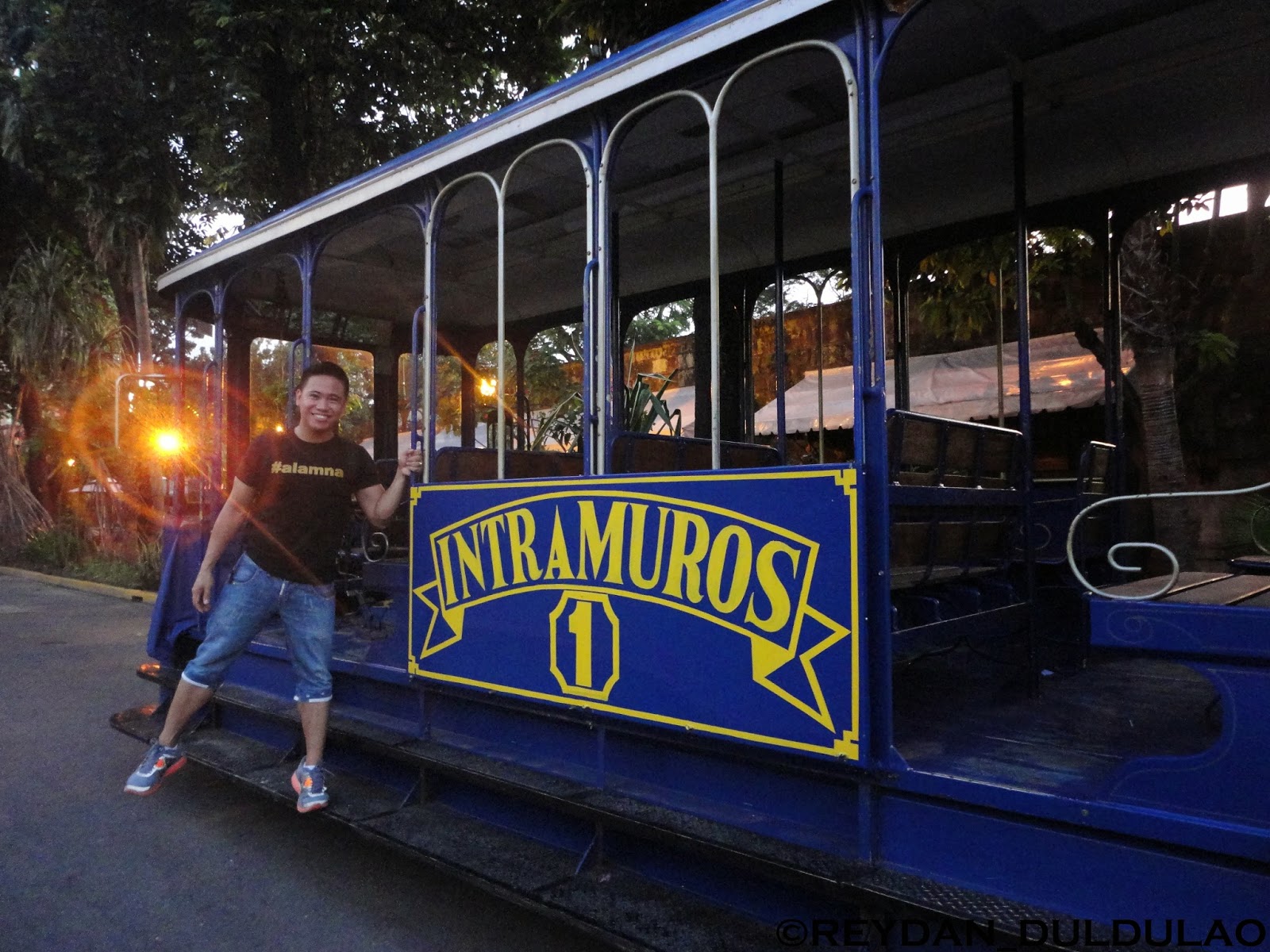Fort Santiago is a citadel first built by Spanish conquistador, Miguel Lopez de Legazpi, for the new established City of Manila in the Philippines. The defense fortress is part of the structures of the walled city of Manila referred to as Intramuros (within the walls).
 |
| with Romaine in front of Fort Santiago |
One of the oldest fortifications in Manila. Built ini 1571, on the site of the native settlement of Raja Soliman. First fort was a palisaded structure of logs and earth. Destroyed in the Limahong attack in 1574. Stone fort built between 1589 and 1592. Damaged in the 1645 earthquake. Repaired and strengthened from 1658 to 1663. Became the headquarters of the British occupation army from 1762 to 1764. Repaired and renovated in 1778.
Former headquarters of the Philippine Division of the US Army. Occupied by the Japanese military in 1942 where hundreds civilians and guerillas were imprisoned, tortured and executed. Destroyed in the Battle of Manila in 1945.
Used as depot of the US Transportation Corps before turnover to the Philippine Government in 1946. Declared Shrine of Freedom in 19950. Restoration and maintenance of the fort began in 1951 under the National Park Development Committee. Management was turned over to the Intramuros Administration in 1992.
 |
| Rizal's footsteps |
 |
| Rizal's Museum |
The fort is one of the most historical sites in Manila. Several lives were lost in its prisons during the Spanish Colonial Period and World War II. Dr. Jose P. Rizal, the Philippine National Hero, was imprisoned here before his execution in 1896.
 |
| Rizal's Cell |
The Rizal Shrine museum displays memorabilia of the hero in their collection and the fort features, embedded onto the ground in bronze, his footsteps representing his final walk from his cell to the location of the actual execution.
 |
| Baluarte de Sta Barbara |
 |
| the majestic Pasig River on the background |
The dungeons used to be the storage vaults and powder magazine of the Baluarte de Santa Barbara, Because of dampness caused by the humid weather and the nearness of the vaults to the Pasig River, the Spaniards decided to build new powder magazine on top of the baluarte in 1715. The vaults were converted into prison cells and storerooms when the Casa del Castellano (Fort Commander's residence) was built in 1718.
 |
| The Dungeons |
 |
| overlooking Manila Cathedral |
Today, the fort, its bastions, and the prison dungeons for criminal used by the Spanish officials, is now part of historical park which also includes the Plaza del Moriones (also called the Plaza de Armas) and several ruins. The park houses well-preserved legacies from the Spanish Colonial Period including memorabilia of Jose Rizal at the Rizal Shrine, a replica of his ancestral house in Laguna.
Adaptive use of the famous historical landmark makes certain ideas for open air theater, picnics and as a promenade. The Intramuros visitors center gives an overview of the various attractions in the walled city.







No comments:
Post a Comment